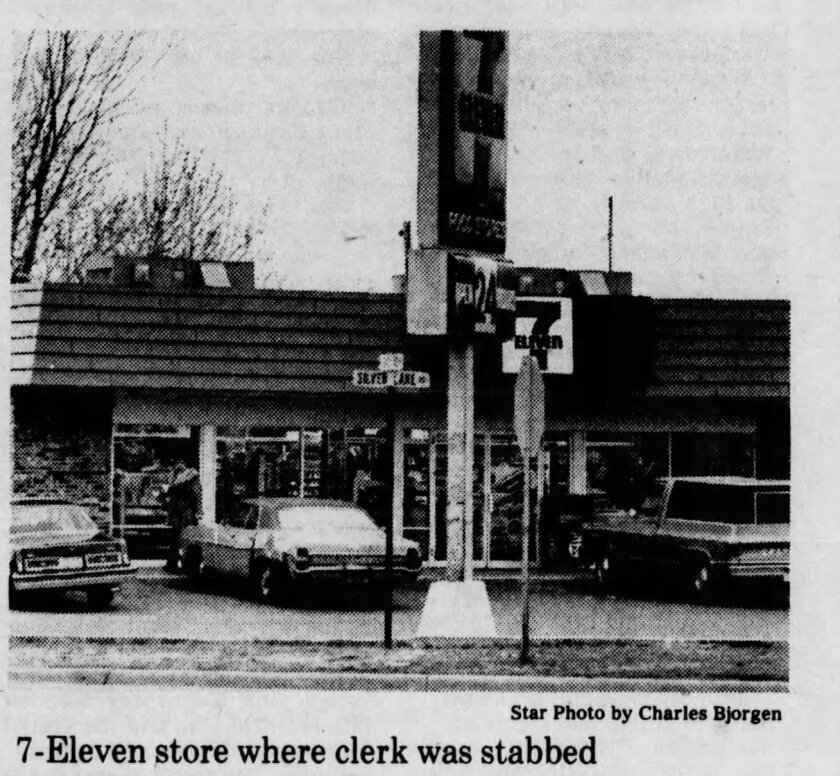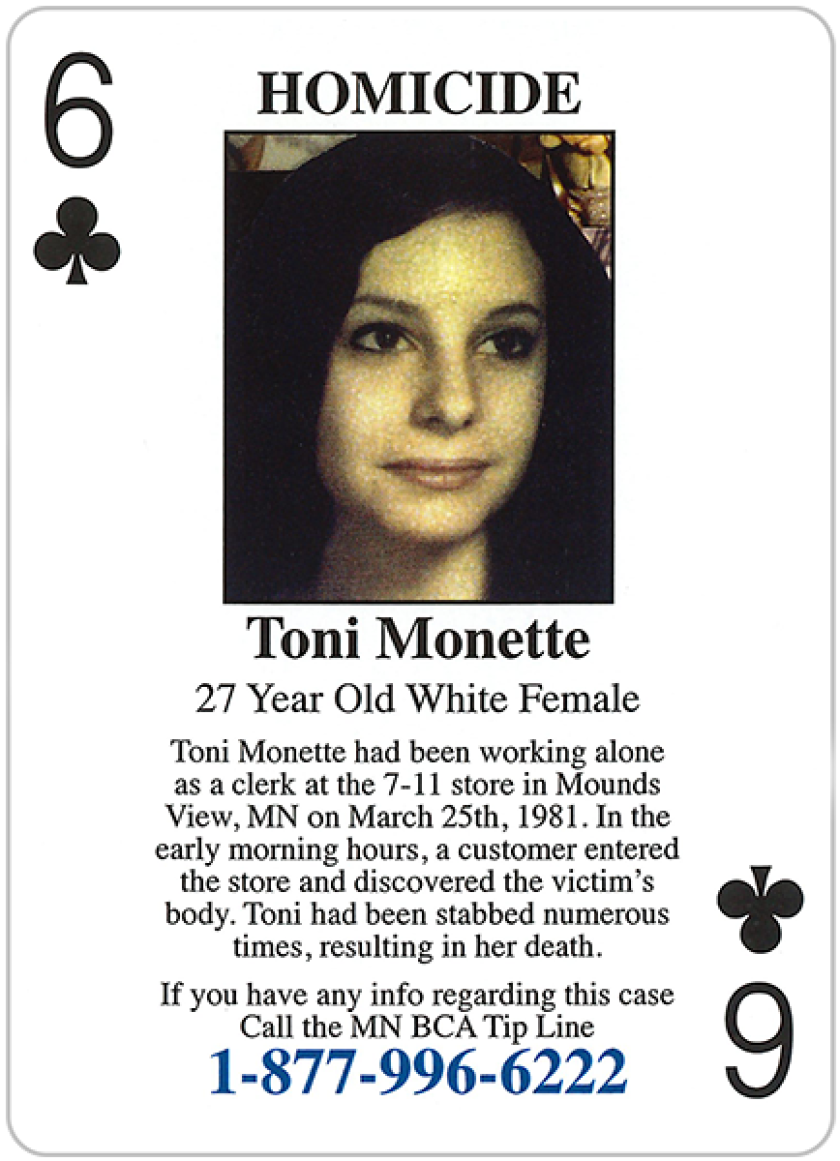MOUNDS VIEW, Minn. — Toni Monette was one month into her management training program at a Mounds View convenience store when her body was discovered by a co-worker in the early morning hours of on March 25, 1981.
The 27-year-old was working the night shift when a co-worker went to clock in for the early morning shift at 4:30 a.m. That’s when the coworker saw Monette’s body in the 7-11’s back storage room.
ADVERTISEMENT
Monette had suffered at least 10 stab wounds — and was no longer breathing.
An investigation was immediately launched, and responding officers noted the motive did not appear to be burglary as the cash register remained untouched. Initial reports also indicated Monette had not been sexually assaulted.
The location of Monette’s body –- in the back storage room –- raised questions for investigators. She was the only person working in the store at the time, leaving the question: Why did she leave her post at the cash register?

There appeared to be two possibilities. She either entered the back room willingly, possibly to use the restroom or retrieve an item, when an unknown assailant took advantage of her position away from windows and public access.
Or, she was forced into the back room.
Cashier receipts showed the last transaction at the store occurred at 3:10 a.m., according to newspaper archives.
Names of possible suspects were floated in the early days of the investigation. Yet more than four decades later, her case remains cold, and the Mounds View Police Department continues to ask the public to come forward with any possible information.
ADVERTISEMENT
Possible suspect
One month after Monette’s body was discovered, Mounds View police and the Minnesota Bureau of Criminal Apprehension homed in on a potential suspect: A man who had escaped from Anoka State Hospital, a nearby treatment facility for the mentally ill.
The patient had a known history of violent criminal activity, according to an April 21, 1981 edition of the Minneapolis Star.
He was on the loose at the time of Monette’s slaying, and was picked up a few days later on foot near Minneapolis.
The patient had a pack of cigarettes and a screwdriver in his possession. When he was picked up, he asked law enforcement officers what the punishment could be for committing violent crimes under the influence of drugs or alcohol.
An letter allegedly written by the patient, according to the Minneapolis Star, included vague information that could be interpreted as a confession for Monette’s slaying.
The same letter also included language that led investigators to believe he could have been responsible for the slaying of Mary Steinhart, who was found stabbed to death in her Minneapolis apartment on Nov. 25, 1980.
Yet just as quickly as the potential suspect materialized, investigators dropped the patient as a possible assailant in both cases.
ADVERTISEMENT
At the time of Steinhart’s death, the patient was hospitalized at Anoka State Hospital. That ruled him out of the Steinhart murder.
Investigators learned in 2012 that advancements in DNA technology proved their theory true, as an arrest — leading to a conviction — was made. The DNA discovered under Steinhart’s fingernails matched with Robert Skogstad of Edgerton, Kan., who pleaded guilty to her murder in 2018.
It’s not clear why investigators dropped the patient as a suspect in Monette’s case. It’s also not clear whether investigators discovered any signs of secondary DNA at Monette’s crime scene that could potentially be used to find her killer.

Monette's sister told the Minneapolis Star in 1981 that pools of blood were discovered near her sister's body, although that information has not been confirmed by law enforcement.
The Mounds View Police Department would not respond to Forum News Service for questions related to Monette’s case.
It is not clear whether DNA was obtained from Monette’s crime scene.
Mother, daughter, friend
Monette married young at 18 years old in 1973 to her high school sweetheart, roughly two years after their first child was born.
ADVERTISEMENT
Monette gave birth to another child in 1974. By 1976, the couple had divorced.
She went on to attend St. Theresa’s College in Winona, Minn., for business. She returned to her hometown of Minneapolis, where she lived with her parents and children at the time of her slaying.
“She worked for me. It doesn’t take long to get to know someone when you work closely with them, “ Mike McDermott, who was the 7-11 zone manager for Minnesota told the Minneapolis Star on April 2, 1981. “She was as nice a person as you could ask for, and she was on her way up.”
Anyone with information on Monette’s slaying is asked to call the BCA tipline at BCA Tip Line 1.877.996.6222









